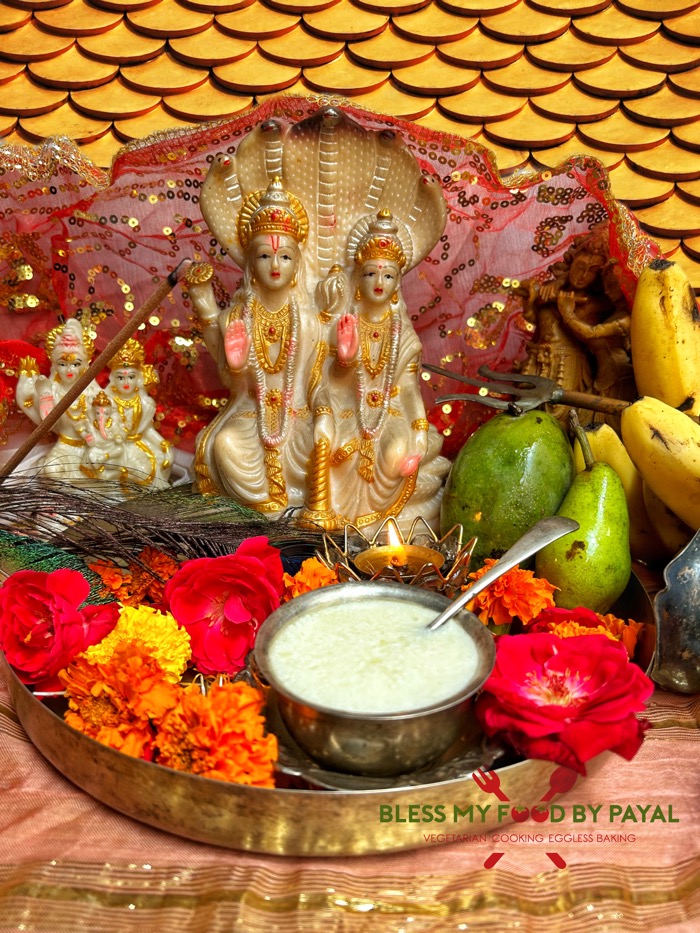
23 Aug Authentic Panchamrit recipe as per Hindu Scriptures
Last Updated on August 23, 2024 by blessmyfoodbypayal
Authentic Panchamrit recipe as per Hindu Scriptures with step wise pictorial and video method.
WHAT IS PANCHAMRIT ?
Panchamrit, also written as Panchamrut comprises of two words “Panch” and “Amrit”.
‘Pancha’ means ‘Five’ and ‘Amrit” stands for ‘Nectar of God’.
So a concoction of five ingredients i.e. Doodh (milk), Dahi (curd), Shakkar (sugar), Madhu (honey) and Desi Ghee (clarified butter) makes it pious recipe named Panchamrit.
HISTORY OF PANCHAMRIT
Panchamrit is popularly mentioned in the largest epic ever named Mahabharata, as one of the valuable ingredients that emerged during Samundra Manthan or Ksheera Sagar Manthan.
The Gods and the demons had a very long battle to have the control over this drink in the light of the fact that whoever consumed Panchamrit would become immortal until the end of time.
PANCHAMRIT AND ITS RELIGIOUS SIGNIFICANCE
Things added to Panchamrit are not just ingredients but they have something to say with firmity.
MILK : Milk represents piousness, devotion, purity and virtue.
HONEY : Honey signifies unity solidarity and sweet discourse.
SHAKKAR : Shakkar is the symbolic of sweetness and happiness.
GHEE : ghee indicates prosperity and triumph.
CURD : Curd signifies progeny, prosperity, success and offspring.
Panchamrit has a deep rooted significance in Hinduism. It is used for anointing Deities. Panchamrit is poured over the idols or images of deities during worship and this ritual is called Abhishek.
The purpose of this bathing ritual is believed to purify the deity and is an act of devotion that invites divine blessings.
Thereafter, Panchamrit is distributed to all the devotees as Prasad.
Besides, Panchamrit is offered during specific rites such as initiation ceremonies, temple inaugurations, and during Yajnas (sacrificial rituals).
In many Hindu households, Panchamrit is used as a cultural practice such as during fasts, auspicious days or as part of daily worship rituals.
DIFFERENCE BETWEEN PANCHAMRIT AND CHARNAMRUT
Many people are of the opinion that panchamrit and charanamrit are one and the same thing whereas actually it is not.
Although both are beneficial to health but their making process is all together different.
Where Panchamrit comprises of 5 pure ingredients i.e. milk, curd, honey, sugar and ghee, Charanamrit is said to be the Nectar of God’s feet.
A water is kept in copper vessel, which infuses the medicinal properties of copper into the water. Also Basil and sesame seeds are added to it.
UTENSILS IDEAL FOR MAKING PANCHAMRIT
For making Panchamrit, this is the is silver bowl that is traditionally used because this metal has antimicrobial, antiviral, calming, and healing properties.
However you can opt for steel, glass or clay pot as well in the absence of silver bowl.
But don’t go for brass, copper or any other bowl made of Panchdhatu or Ashtdhatu.
Panchdhatu means an alloy of 5 metals like gold, silver, copper, zinc and iron and Ashtdhatu means an alloy of 8 Metals, i.e. Gold, Silver, Copper, Zinc, Lead, Tin, Iron and Mercury.
WHAT OTHER ADDITIONAL INGREDIENTS ARE USED IN PANCHAMRIT?
The mentioned 5 are the basic ingredients of Panchamrit but in addition to that, in some regions, additional ingredients like cardamom, grapes, banana, tender coconut and dates are also used.
SIGNIFICANCE OF PANCHAMRIT OTHER THAN RELIGIOUS PURPOSE
Panchamrit is not confined to religious purpose but it has great medicinal values also, as per Ayurveda.
If consumed on regular basis, it is excellent for bones, strengthening our Immune System and brain Function, beneficial during Pregnancy and Prenatal Benefits, provides energy, good for skin and hair nourishment and helpful in strengthening reproductive tissues.
SUBSTITUTES OF INGREDIENTS
Milk, curd, Honey, Shakkar and Ghee are the basic ingredients and these can’t be substituted. But yes, you can take little liberty.
Like, traditionally only desi cow’s Milk and the ghee and curd made out of desi cow’s milk is used in making Panchamrit but in case you don’t have an access to desi cow’s milk, in that case you can opt for buffalo milk.
Also, milk needs to be raw, ie unboiled. But in case Panchamrit is needed late in the evening and you can’t keep the milk without boiling whole day, especially in summers, you can use the boiled milk after it’s cool down completely.
If talking about desi ghee, it should be in dissolved form but not by direct heating.
In summers, ghee naturally melts but in winters, you can melt ghee by putting it under sun or somewhere near to heat.
Shakkar is typically used in making Panchamrit as it is the unrefined form of sugar. It’s not that people don’t use sugar at all but some people have object to it.
Shakkar can be replaced with rock candy as well by crushing it.
QUANTITY OF INGREDIENTS FOR PANCHAMRIT
Do not go strictly by the quantity of each ingredient given in this post. What we mean to say that if we have taken half table spoon of ghee doesn’t mean you to have to go for half tablespoon only.
The only thing to be kept in mind is that …
quantity of honey should be double the quantity of ghee;
quantity of shakkar should be double the quantity of honey;
quantity of curd should be double the quantity of shakkar and lastly
quantity of milk should be double the quantity of curd.
That’s it.
Rest you can enhance the quantity of each ingredient respectively depending upon your usage or number of disciples to whom Panchamrit is to be distributed.
FAQ’s
CAN I ADD DRY NUTS IN PANCHAMRIT?
Traditionally dry nuts do not go in panchamrit as long as you are using it for Abhishek and Prasad but you can add nuts like cashews, almonds, pistachios and fox nuts only if you are making panchamrit for bhog.
CAN I ADD BASIL (TULSI) IN PANCHAMRIT?
If you are making panchamrit for Abhishek to lord Vishnu or any of his Avatars like lord Rama or lord Krishna, then you can use basil in Panchamrit but basil is strictly prohibited for Lord Shiva.
However in old Hindu scriptures, there is only a mention of five ingredients for making panchamrit.
WHAT IF I ADD GANGA JAL IN PANCHAMRIT?
The milk of a cow contains the essence of all rivers and oceans, and all deities reside within the cow, so there is no need of adding gangajal in panchamrit.
But in case you want to add it, better add at the first place. Only thereafter, add all the other five ingredients.
FOR HOW LONG PANCHAMRIT CAN BE STORED?
Panchamrit should be consumed immediately after making it. It shouldn’t be refrigerated.
If the puja is lengthy, do not prepare the Panchamrit in advance. Instead, place the five ingredients in separate bowls at the puja site. When the puja concludes and it’s time to distribute the Panchamrit, mix the five ingredients together at that moment and then distribute it.
STEP WISE PICTORIAL RECIPE OF AUTHENTIC PANCHAMRIT RECIPE AS PER HINDU SCRIPTURES
Take a bowl. Preference should be given to silver bowl. But in case you don’t have silver bowl, you can go for steel, glass or clay bowl.
Add desi ghee. Ghee should be in melted form but not by heating. Preference should be given to a ghee made out of cow’s milk.
Then add honey, which should be double the quantity of desi ghee.
Now add shakkar or powdered rock candy (mishri). In the absence of both sugar or jaggery can be added. The quantity of shakkar should be double the quantity of honey.
Give it a good mix leaving behind no lumps.
Then comes curd. It should also be made of cow’s milk and it’s quantity needs to be double the quantity of shakkar.
Better to whisk the curd before using. Smooth consistency of curd will not allow the formation of lumps.
Add the curd as well.
Give them a good mix.
Then comes milk. It should be raw i.e. unboiled and of cow’s preferably. The quantity of milk should be double the quantity of curd.
Mix well.
Panchamrit is ready.
AUTHENTIC PANCHAMRIT RECIPE AS PER HINDU SCRIPTURES -RECIPE CARD
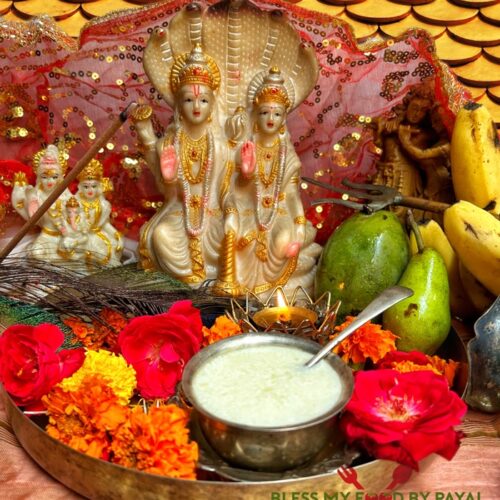
Authentic Panchamrit recipe as per Hindu Scriptures
Ingredients
- 1/2 tbsp melted desi ghee (made of desi cow's milk)
- 1 tbsp honey
- 2 tbsp shakkar/mishri/sugar
- 4 tbsp curd (made of desi cow's milk)
- 8 tbsp raw cow's milk
Instructions
- Take a bowl. Preference should be given to silver bowl. But in case you don't have silver bowl, you can go for steel, glass or clay bowl.
- Add desi ghee. Ghee should be in melted form but not by heating. Preference should be given to a ghee made out of cow's milk.
- Then add honey, which should be double the quantity of desi ghee.
- Now add shakkar or powdered rock candy (mishri). In the absence of both sugar or jaggery can be added. The quantity of shakkar should be double the quantity of honey.
- Give it a good mix leaving behind no lumps.
- Then comes curd. It should also be made of cow's milk and it's quantity needs to be double the quantity of shakkar.
- Better to whisk the curd before using. Smooth consistency of curd will not allow the formation of lumps.
- Add the curd as well.
- Give them a good mix.
- Then comes milk. It should be raw i.e. unboiled and of cow's preferably. The quantity of milk should be double the quantity of curd.
- Mix well.
- Panchamrit is ready.

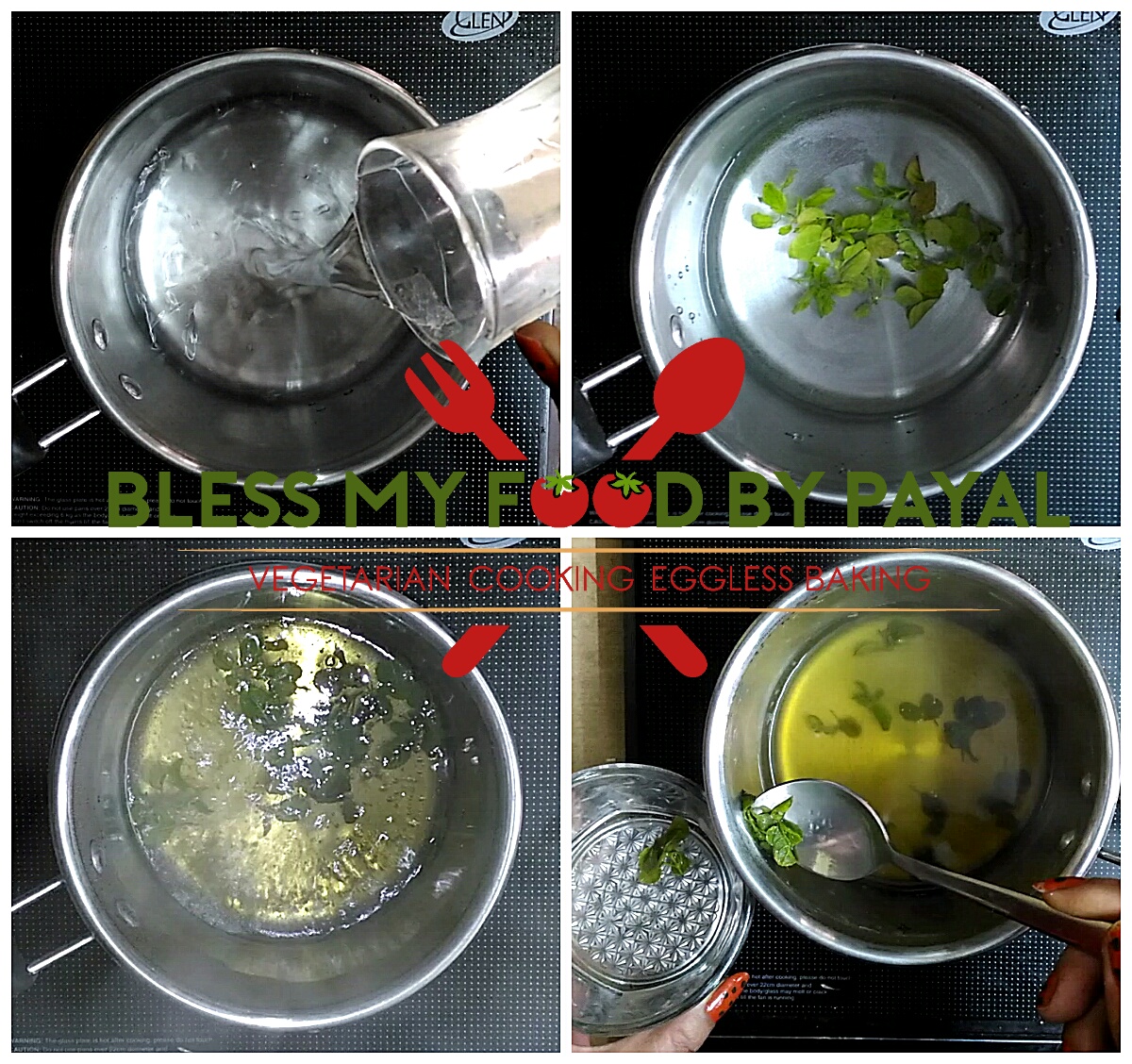
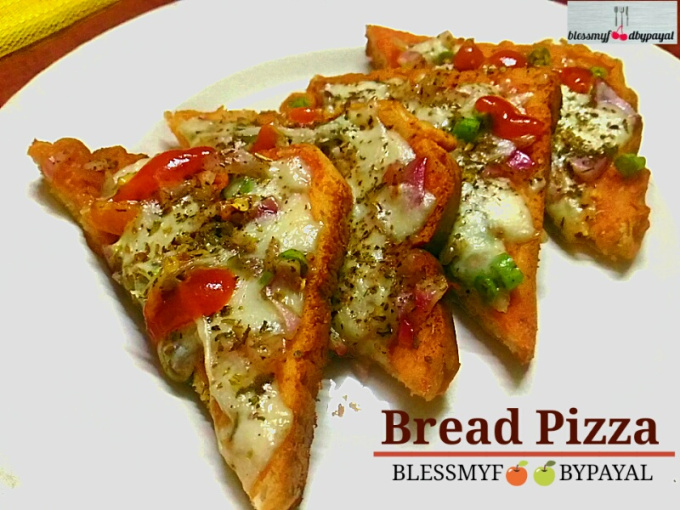
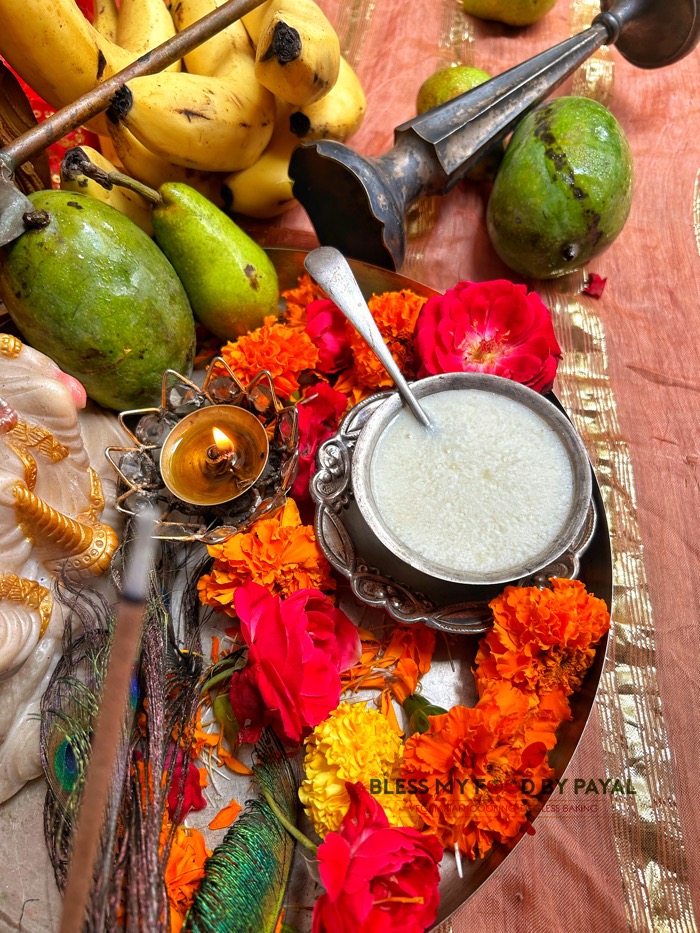
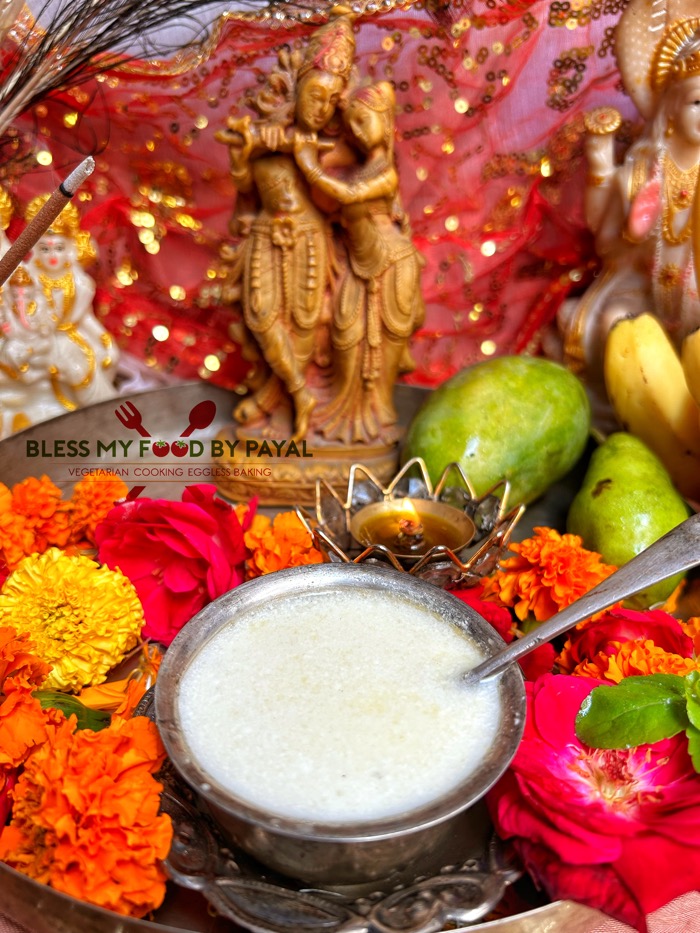
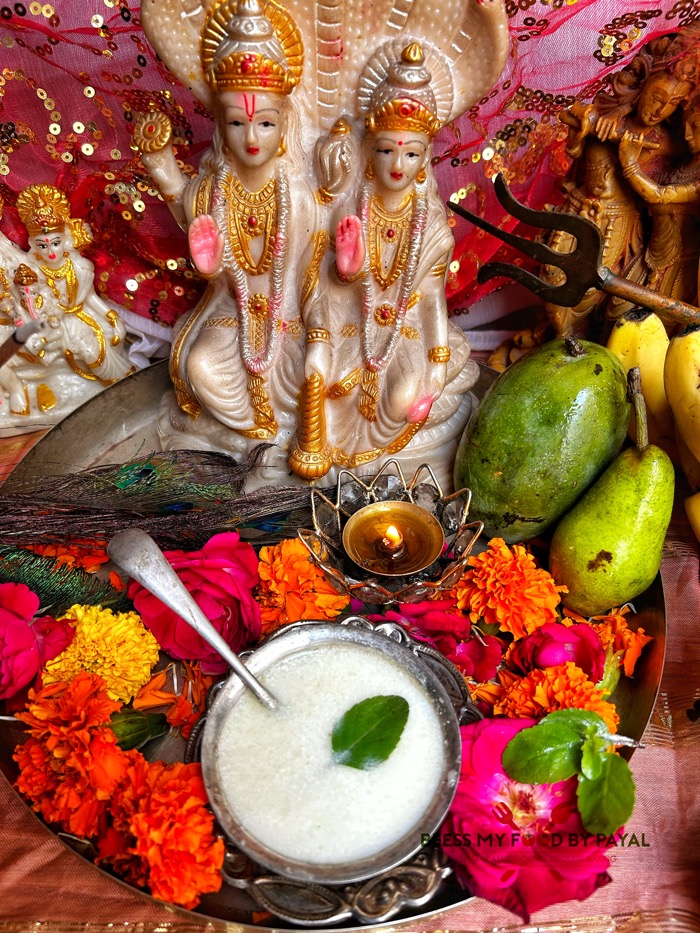
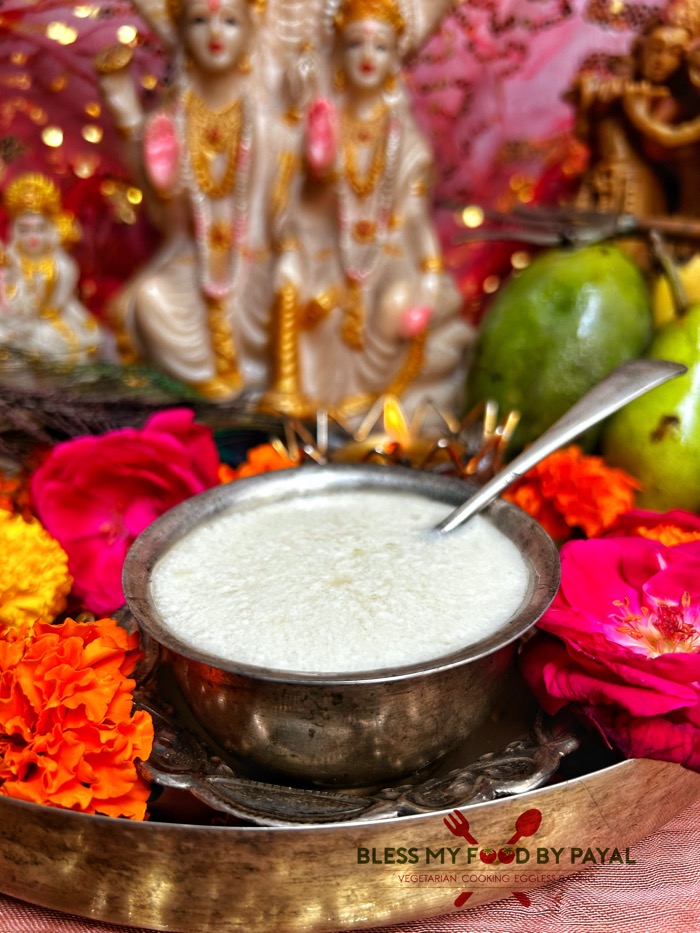
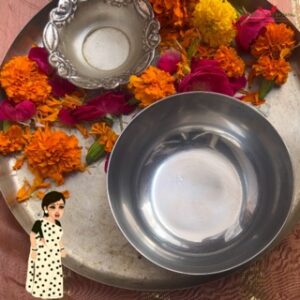
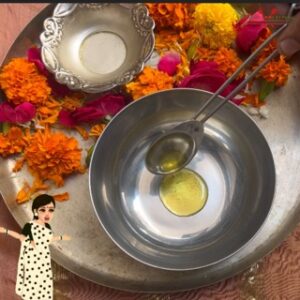
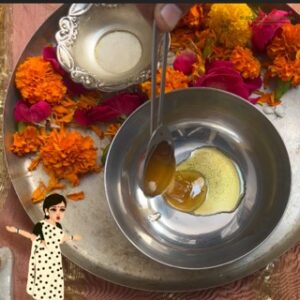
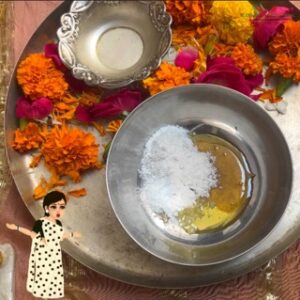
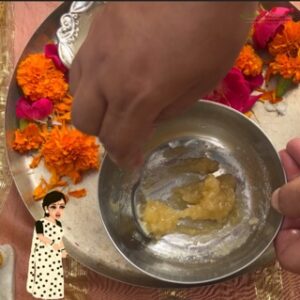
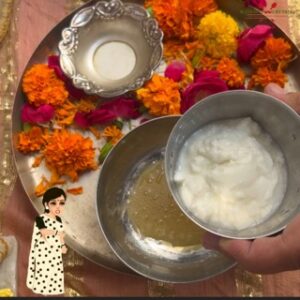
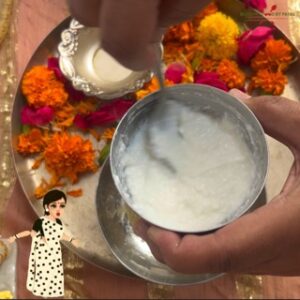
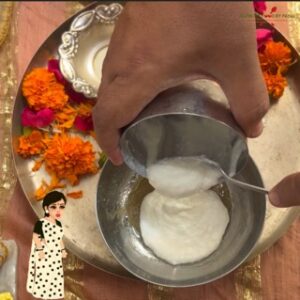
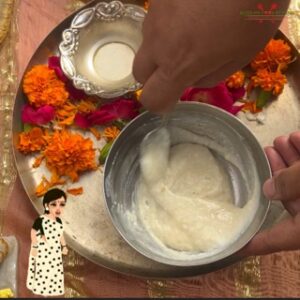
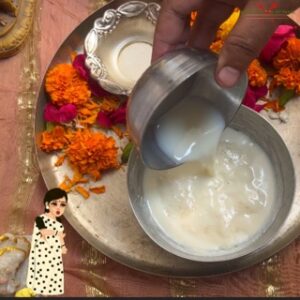
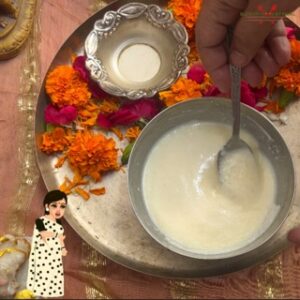
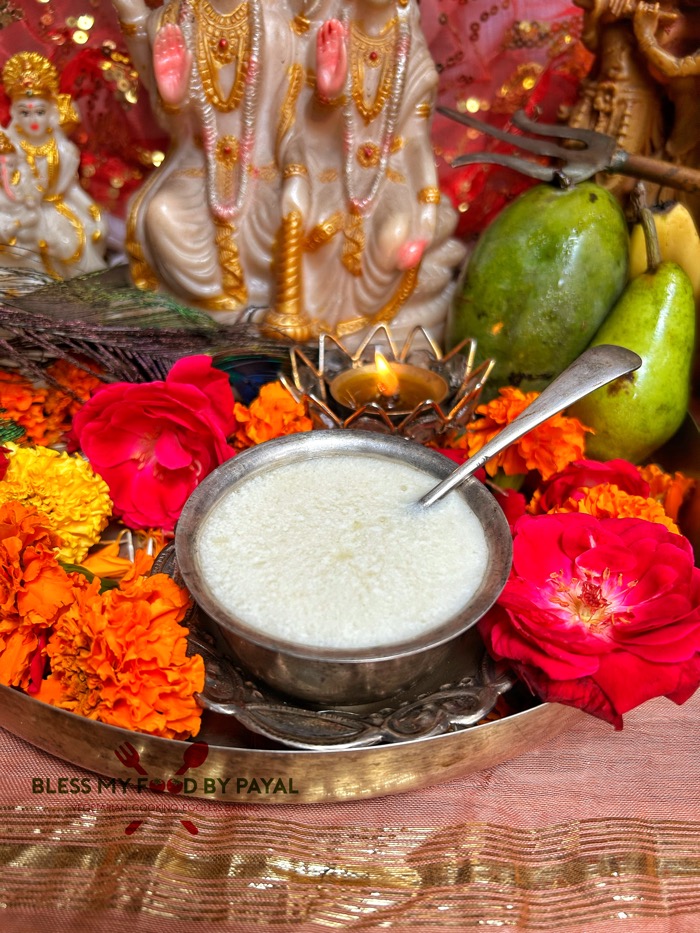
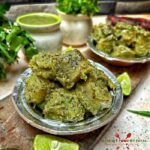
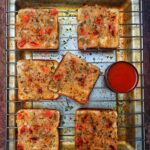
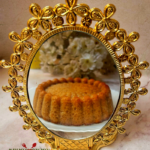
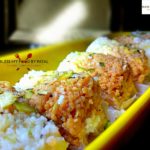
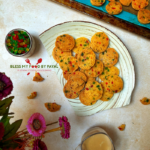
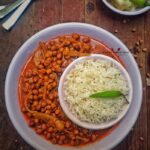
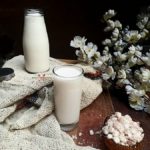
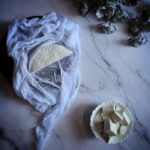
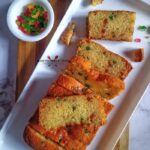
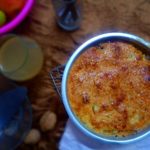
No Comments